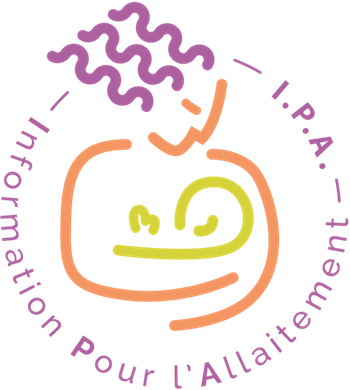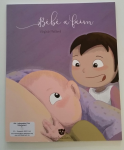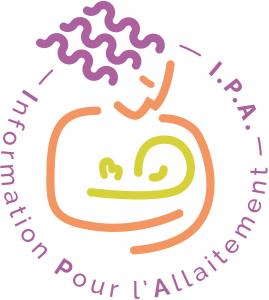Catégories
Documents disponibles dans cette catégorie (225)
Bulletin : texte imprimé
Hot Milk, n°9 - Automne 2017
2017Bulletin : texte imprimé
Hot Milk, n°11 - Printemps 2018
2018Bulletin : texte imprimé
Hot Milk, n°13 - Automne 2018
2018Bulletin : texte imprimé
Les Dossiers de l'Allaitement, n°147 - Juin 2019
La Leche league France, Auteur | 2019Bulletin : texte imprimé
Breastfeeding Medicine, Vol. 14, n°4 - Mai 2019
2019Article : texte imprimé
Article : texte imprimé
Residents and medical students need to work with physicians who specialize in breastfeeding medicine, just like they do for every other subspecialty they elect to spend time with. Even though residents and medical students cannot spend time in e[...]Article : texte imprimé
Séverine Gojard, Auteur |En étudiant l'alimentation dans la prime enfance au moyen d'une enquête auprès de mères d'enfants de moins de trois ans, on met au jour deux modes de diffusion des règles d'alimentation des nourrissons : un mode savant, caractérisé par une faibl[...]texte imprimé
Cécile Boscher, Auteur ; Sandrine Boudault, Auteur ; Julie Hamdan, Auteur | Paris [France] : ellipses | 2017"L’allaitement maternel est la forme d’alimentation la plus adaptée pour les nourrissons et les jeunes enfants. Pourtant, la durée de l’allaitement en France est particulièrement courte par rapport à celle de la plupart des pays développés et ne[...]Article : texte imprimé
Article : texte imprimé
texte imprimé
"Les femmes françaises allaitent peu et, généralement, pour un temps très court. Le système juridique de notre pays compte incontestablement parmi les causes de cette situation, aux conséquences sanitaires néfastes trop souvent ignorées. Non se[...]texte imprimé
"Pourquoi choisir d’allaiter ? Comment cela fonctionne ? Quelles sont les bonnes positions ? Comment prévenir les difficultés ? Comment savoir que le bébé tète efficacement ? Quand et comment sevrer le bébé ? Comment gérer la reprise du travail [...]texte imprimé
"Ce précis de pratique clinique a été conçu pour assurer le soutien des professionnels qui accompagnent les familles souhaitant allaiter leur enfant. Le groupe d'auteurs (pédiatre, gynécologue, nutritionniste, pharmacien, puéricultrices, sages-f[...]Article : texte imprimé
texte imprimé
Marie-Dominique Marie-Linder, Auteur ; Catherine Maupas-Morera, Auteur | Hachette Pratique | Parents | 1997Article : texte imprimé
texte imprimé
Lesptitesmainsdabord, Auteur ; Maman Lune, Auteur ; Axelle Camus, Auteur | Lesptitesmainsdabord | 2018"Suite à leurs allaitements, leurs recherches et leurs lectures, les auteures des blogs Lesptitesmainsdabord et Maman Lune ont réuni leurs écrits dans ce livre. Avec la participation de Axelle Camus, chiropracteur et maman allaitante. Un[...]Article : texte imprimé
Background The use of donor human milk is rising. Maternal awareness of donor human milk use, milk donation, and milk banks has not been well described in the United States. Research Aims To explore maternal experience, knowledge, and attit[...]Article : texte imprimé
Jill R. Demirci, Auteur ; Debra L. Bogen, Auteur |Background: Primiparous women are at risk for early, unintended breastfeeding reduction and cessation. Breastfeeding patterns that contribute to these outcomes require further exploration. Research aim: This study aimed to describe early, “[...]Article : texte imprimé
Background Numerous researchers have evaluated the influence of federal and workplace lactation policies on breastfeeding duration, however few have considered the experiences of breastfeeding people returning to school. Research aim The ai[...]Article : texte imprimé
Kinga Pemo, Auteur ; Diane Philips, Auteur ; Alison M. Hutchinson, Auteur |"Background: Researchers have shown beneficial influences of exclusive breastfeeding for women and infants. Therefore, the World Health Organization recommends exclusively breastfeeding infants for the first 6 months following birth. In Bhutan,[...]Article : texte imprimé
Background: Breastfeeding is known to be the most beneficial way of feeding infants, but 68% of the infants enrolled in the U.S. Department of Agriculture’s Special Supplemental Nutrition Program for Women, Infants, and Children are fully formu[...]Article : texte imprimé
Many drugs are being investigated for treatment of COVID-19. The Medical Letter on Drugs and Therapeutics maintains an excellent, periodically updated and well-referenced table of anti-COVID-19 drugs that is free to download.1 Additional informa[...]Article : texte imprimé
Alice Burrell, Auteur ; Anne M. Kueter, Auteur ; Sujan Ariful, Auteur |Background Since 25 August, 2017 over 693,000 Rohingya have been forced from Myanmar due to mass violence, seeking refuge in neighboring Bangladesh. Nutritional surveys during 2017 revealed worrying levels of malnutrition and poor infant feedin[...]texte imprimé
Guide pratique de l'allaitement et du maternage, écrit à partir de l'expérience de centaines de milliers de mères qui allaitent.Article : texte imprimé
Tingting Sha, Auteur |Background: With births generated with assisted reproductive techniques (ARTs) increasingly, the effect of ARTs on infant feeding behaviors is an essential topic to explore. However, limited literature focused on this topic. The objective of thi[...]Article : texte imprimé
Yasutuka Kuniyoshi, Auteur ; Masahiro Kikuya, Auteur ; Hiroko Matsubara, Auteur ; Mami Ishikuro, Auteur ; Taku Obara, Auteur ; Shigeo Kure, Auteur ; Schinichi Kuriyama, Auteur |Backgrounds: The effect of breastfeeding on weight status of individuals after a large-scale natural disaster in a developed country is unclear. We aimed to investigate the association of breastfeeding with childhood overweight and/or obesity in[...]Article : texte imprimé
Leslie Kummer, Auteur ; Naomi Duke, Auteur ; Laurel Davis, Auteur ; Iris Borowsky, Auteur |Objective: To explore, in a large, nationally representative U.S. sample of children, potential independent associations between social and community factors and breastfeeding outcomes, using the Social Ecological Model as a theoretical framewor[...]Article : texte imprimé
Hadar Moran-Lev, Auteur ; Adir Farhi, Auteur ; Smadar Bauer, Auteur |Objective: Breastfeeding is considered the gold standard of infant feeding during the first year of life. However, many women experience difficulty breastfeeding and do not breastfeed to the extent that they initially planned. Our aims were to p[...]Article : texte imprimé
Geneviève Ritchie Ewing, Auteur ; Amanda M. Mitchell, Auteur ; Lisa M. Christian, Auteur |Background: Breastfeeding plays an important role in both maternal and infant health and well-being. While researchers have examined the relationship between postpartum psychological distress and breastfeeding behaviors, few have investigated l[...]Article : texte imprimé
Rocio Rodriguez Vazquez, Auteur ; Marta Elena Losa-Iglesias, Auteur ; Immaculada Corral-Liria, Auteur |Background: The socially constructed meanings of breastfeeding that have been passed from generation to generation by grandmothers produce continuities and discontinuities in the practices of breastfeeding. Research aim: The aim of this stu[...]Article : texte imprimé
AK Anderson, Auteur ; Evan Johnson, Auteur ; Nicole Motoyasu, Auteur |Background: Over the past 2 decades, southern states in the United States have recorded the lowest breastfeeding rates. It is not known whether awareness of breastfeeding laws and provision of resources play any role in their breastfeeding prac[...]texte imprimé
Gill Rapley, Auteur ; Tracey Murkett, Auteur | 2010"Baby-Led Weaning explodes the myth that babies need to be spoon-fed and shows why self-feeding from the start of the weaning process is the healthiest way for your child to develop. With BLW, you can skip purées and make the transition to solid[...]texte imprimé
Virginie Maillard, Auteur | 2017"Bébé a faim”, c’est un livre doux, lent, à hauteur d’enfant : un livre qui donne de l’importance aux petits détails. Sans vraiment de début ni de fin, ce livre est comme une fenêtre ouverte sur un moment simple d’une famille qui invite des ami[...]Article : texte imprimé
Ana Cristina Lindsay, Auteur ; Sherrie F. Wallington, Auteur ; Mary L. Greaney, Auteur |Background: Exclusive breastfeeding for the first 6 months of life and timely introduction of appropriate solid foods are important determinants of weight status in infancy and later life stages. Disparities in obesity rates among young childre[...]Article : texte imprimé
Roser Porta, Auteur ; Natàlia Miralles, Auteur ; Anna Paltrinieri, Auteur |The amount of milk production in mothers of babies admitted to the neonatal intensive care unit (NICU) is mostly determined by some actions focused on the first hours and days after birth. Working for an improvement in our previous results in te[...]Article : texte imprimé
Anne M. Williams, Auteur ; Caroline Chantry, Auteur ; Eveline L. Geubbels, Auteur |Background: Appropriate infant feeding is a persistent challenge for human immunodeficiency virus (HIV)-infected mothers in sub-Saharan Africa. Objective: This study aimed to describe correlates of infant feeding among HIV-infected mothers [...]Article : texte imprimé
Breastfeeding, Antidepressants, and Depression in the Mercy Pregnancy and Emotional Well-Being Study
Megan Galbally, Auteur ; Stuart J. Watson, Auteur ; Helen L. Ball, Auteur |"Background: Depression is consistently shown to predict lower rates of breastfeeding. In a handful of studies, breastfeeding has predicted lower depression symptoms. However, studies demonstrating the latter are limited in their measurement of[...]Article : texte imprimé
Introduction: Although lactation dysfunction and breastfeeding difficulties after spinal cord injury have been previously reported, there is still a lack of research on the specific challenges and aspects that require more support. This unique [...]Article : texte imprimé
Elizabeth McGuire, Auteur |Depending on the definition, from 1.4% to 10% of Australian infants are macrosomic. In the current environment of health concerns over high rates of overweight and obesity in the community, it is relevant to consider aspects of breastfeeding mac[...]Article : texte imprimé
Elena Jansen, Auteur ; Kimberley M. Mallan, Auteur ; Rebecca Byrne, Auteur |Background: Longer breastfeeding duration appears to have a protective effect against childhood obesity. This effect may be partially mediated by maternal feeding practices during the first years of life. However, the few studies that have exam[...]Article : texte imprimé
Cate Bailey, Auteur ; Susan Tawia, Auteur ; Elizabeth McGuire, Auteur |Background Debate about mother and infant bed sharing has been polarized between supporters of bed sharing and public health policies that attempt to mitigate the risk of Sudden Infant Death Syndrome. Differences in group demographics may be an[...]Article : texte imprimé
Background Little research has focused on breastfeeding and diet quality, particularly in low-income populations at risk for shorter breastfeeding duration and poorer diet quality. Research Aim The aim of this study was to examine the assoc[...]Article : texte imprimé
Objective: The association between assisted conception and breastfeeding outcomes has been investigated, but the women's experiences have not been fully explored. This study aimed to describe and understand the breastfeeding experience of first-[...]texte imprimé
Get physically and mentally ready to breastfeed your baby. This esay-to-follow guide, written by two maternal/child experts, provides practical, reassuring advice on everything from making preparations at home and starting to breastfeed at th[...]Article : texte imprimé
Guido E. Moro, Auteur ; Enrico Bertino, Auteur |Key Messages Whenever possible, breastfeeding should be promoted and supported in mothers with suspected or confirmed COVID-19 infection, without disregarding the option of mother’s milk expression. External surfaces of human milk containers[...]Article : texte imprimé
Matthias Grube, Auteur ; Anja Keitel-Korndörfer, Auteur ; Sarah Bergmann, Auteur |Background: To a large extent, breastfeeding practices depend on cultural norms. It is thus of particular importance to examine these practices in various settings, especially when considering the effect of complex factors, such as body mass in[...]Article : texte imprimé
Ya-Wen Chiu, Auteur ; Shao-Wen Cheng, Auteur ; Chun-Yuh Yang, Auteur |Background: Parents may consider interrupting breastfeeding to manage neonatal jaundice (NJ). Our aims were to determine correlations of breastfeeding with NJ by examining infants' manifestations in the first week after birth and to understand p[...]Article : texte imprimé
Vanessa Simas Braga, Auteur ; Márcia Regina Vítolo, Auteur ; Paulo Floriani Kramer, Auteur |Objective: To investigate risk factors for pacifier use in the first year of life. Materials and Methods: A prospective cohort study was conducted with children enrolled at birth in Porto Alegre, Southern Brazil, whose mothers underwent prena[...]Article : texte imprimé
Nicole Yonke, Auteur ; Rebekah Maston, Auteur |Background: Women taking methadone or buprenorphine are encouraged to breastfeed if stable without polysubstance use. Research Aim: We aimed to determine the difference between stated intention to breastfeed prenatally in women taking metha[...]Article : texte imprimé
Kristin P. Kremer, Auteur ; Theodore R. Kremer, Auteur |Purpose: Child maltreatment has serious implications for youth outcomes, yet its associations with early parenting practices are not fully understood. This study investigated whether breastfeeding practices are correlated with childhood maltreat[...]Article : texte imprimé
Kristjana H. Ásbjörnsdóttir, Auteur ; Jennifer A. Slyker, Auteur ; Elizabeth Maleche-Obimbo, Auteur |Background: Human immunodeficiency virus (HIV)–exposed uninfected (HEU) infants are a growing population in sub-Saharan Africa, with higher morbidity and mortality than HIV-unexposed infants. HEU infants may experience increased morbidity due t[...]Article : texte imprimé
Mishel Unar-Munguia, Auteur ; Gabriela Torres-Mejia, Auteur ; M. Arantxa Colchero, Auteur |Background: Breastfeeding reduces women’s risk of breast cancer. Since exclusive breastfeeding has a stronger hormonal effect, it could theoretically result in a greater reduction in breast cancer risk than any breastfeeding mode. No meta-analy[...]Article : texte imprimé
Shelley Jung, Auteur ; Tabashir Z. Nobari, Auteur ; Shannon E. Whaley, Auteur |Background: Breastfeeding rates among low-income children participating in the Special Supplemental Nutrition Program for Women, Infants, and Children (WIC) lag behind national rates. In Los Angeles County (LAC), recent efforts have been made to[...]Article : texte imprimé
Shamini Ramoo, Auteur ; Tuyet Anh Trinh, Auteur ; Jane Elizabeth Hirst, Auteur |Background: The benefits of breastfeeding to both maternal and infant health are vast and widely known. The aim of this study was to elicit the rates of exclusive breastfeeding, early initiation of breastfeeding, and colostrum feeding and to det[...]Article : texte imprimé
Immacolata Dall'Oglio, Auteur ; Francesca Marchetti, Auteur ; Rachele Mascolo, Auteur |Background Infants, young children, and their mothers are vulnerable in humanitarian emergencies. The health benefits of optimal breastfeeding practices in emergency settings have been demonstrated by many researchers. Infant and Young Children[...]texte imprimé
Offers information and inspiration that mothers need to begin breastfeeding and to continue for many months. It gives concise answers to common questions and provides practical solutions for problems mothers may encounter such as avoiding sore n[...]Article : texte imprimé
Tengteng Li, Auteur ; Nafei Guo, Auteur ; Hui Jiang, Auteur ; Maher Eldadah, Auteur |Background: Breastfeeding self-efficacy has been shown to be a strong predictor of breastfeeding initiation and duration; however, factors associated with breastfeeding self-efficacy in China are unclear. Research aims: The aims were (a) to[...]Article : texte imprimé
Julia P. Felice, Auteur ; Kathleen M. Rasmussen, Auteur |The convergence of work-related constraints and technological advances in commercially available breast pumps has catalyzed a major shift.1 Most human milk-feeding mothers in the United States now use breast pumps and bottles to provide human mi[...]Article : texte imprimé
The complex issues surrounding cannabis* use during breastfeeding have been well detailed by Mourh and Rowe in this issue of Breastfeeding Medicine.1 One topic that requires some amplification is that of assay methodology. The high fat solubilit[...]Article : texte imprimé
Article : texte imprimé
Article : texte imprimé
Stefanie I Rosin, Auteur ; IBCLC, International Board Certified Lactation Consultant, Auteur ; PhD, Auteur |Introduction: This case of a mother and her two children, born 20 years apart, highlights how Biological Nurturing (BN) supported a woman in meeting her personal breastfeeding goals. We know lack of breastfeeding support contributes to early we[...]texte imprimé
Article : texte imprimé
Shujuan Li, Auteur ; Lan Zhang, Auteur ; Qi Zhou, Auteur ; Siyuan Jiang, Auteur ; Yi Yang, Auteur ; Yun Cao, Auteur |Background: Human milk is known to be rich in cellular components, including stem cells and immune cells. However, the dynamics of these cellular components at different lactation stages, and the differences between milk for preterm and term in[...]Article : texte imprimé
The World Health Organization (WHO) global nutrition targets for 2025 include increasing the rate of exclusive breastfeeding in the first 6 months to at least 50% (http://www.who.int/nutrition/global-target-2025/en/). From 2007 until 2014, only [...]Article : texte imprimé
Juhee Kim, Auteur ; Rose Ann Mathai, Auteur |Background: The environment or setting to which an infant is exposed is crucial to establishing healthy eating habits and to preventing obesity. This study aimed to compare infant feeding practices and complementary food type between parent care[...]Article : texte imprimé
Laurene Aydon, Auteur ; Margo Zimmer, Auteur ; Yvonne Hauck, Auteur |Breastfeeding support is essential for mothers of late preterm and early term infants. Our aim was to compare breastfeeding data from mother-infant dyads of late preterm (33 to 36+6) and early term infants (37 to 37+6) related to referral and fo[...]Article : texte imprimé
Hilary M. Wren, Auteur ; Noel W. Solomons, Auteur ; Anne Marie Chomat, Auteur |Background: Among indigenous Mam-Mayan women, breastfeeding practices may be intertwined with cultural influences during the early postpartum period. Objectives: Our study explored whether beliefs regarding transmission of emotions through [...]Article : texte imprimé
Background: The Human Milk Banking Association of North America (HMBANA) is a nonprofit association that standardizes and facilitates the establishment and operation of nonprofit donor human milk banks in North America. Few studies have examined[...]texte imprimé
C Audoin, AuteurEnjeux du Code de Déontologie international et des standards de pratique internationaux pour une pratique de "consultation d'allaitement" dans une culture et un cadre réglementaire et déontologique national.Article : texte imprimé
Kathryn Eden, Auteur ; Katherine Carroll, Auteur ; Rebecca Williamson, Auteur ; Andrea Butler, Auteur ; Julie Smith, Auteur |Our study focuses on designated breastfeeding rooms on campus at a leading Australian university. Universities have a growing female staff and student cohort, including breastfeeding women who are legally protected to breastfeed. As part of a wi[...]Article : texte imprimé
Nouf M. AlKusayer, Auteur ; William K. Midodzi, Auteur ; Leigh Anne Newhook, Auteur |Background: The original 17-item Iowa Infant Feeding Attitude Scale (IIFAS) has been validated and widely used to assess attitudes toward breastfeeding. A reduced 13-item version of the IIFAS was recently validated in a Canadian setting. Howeve[...]Article : texte imprimé
Lauren Gerchow, Auteur ; Allison Squires, Auteur ; Simon Jones, Auteur |Background: Disparities in breastfeeding patterns by race and ethnicity in the United States have been documented, and Latinx ethnicity is often associated with higher rates of breastfeeding initiation and longer breastfeeding duration compared [...]Article : texte imprimé
There is a common belief that the hormone oxytocin, which is released during let down, reduces stress, and that breastfeeding prevents depression and anxiety. A publication from the United States Joint Commission asserts that one of the benefits[...]Article : texte imprimé
Key Messages Donor human milk provides a life-saving, short-term intervention when mother’s own milk is temporarily unavailable. Supporting breastfeeding to ensure a mother increases her supply to take over the provision of milk for her own [...]Article : texte imprimé
Introduction: Exclusive breastfeeding is recommended for an infant's first 6 months of life. If unable to breastfeed, expressed breast milk, including donor human milk (DHM), is recommended for optimal nutrition. Benefits of DHM in preterm infan[...]Article : texte imprimé
Article : texte imprimé
VS Moullé, Auteur ; P. Parnet, Auteur ; A. Singh, Auteur ; La Leche League France, Traducteur |Article : texte imprimé
Natalie N. Atyeo, Auteur ; Tahvi D. Frank, Auteur ; Emma F. Vail, Auteur |Background: Guatemala exhibits the sixth highest rate of child stunting worldwide, and stunting disproportionately affects Guatemala indigenous communities. In a country struggling to combat this result of malnutrition, early child nutrition is[...]Article : texte imprimé
Reena Oza-Franck, Auteur ; Jennifer J. Moreland, Auteur ; Kelly McNamara, Auteur |Background: Detailed data on lactation practices by gestational diabetes mellitus (GDM) history are lacking, precluding potential explanations and targets for interventions to improve lactation intensity and duration and, ultimately, long-term [...]Article : texte imprimé
Chenxi Cai, Auteur ; Matthew Granger, Auteur ; Peter Eck, Auteur |Background: The literature on the iron requirements of exclusively breastfed infants contains conflicting data and contrary views. Objective: The purpose of this study was to summarize the evidence for both benefits and risks of daily oral ir[...]Article : texte imprimé
Juila H. Kim, Auteur ; Jong C. Shin, Auteur ; Sharon M. Donovan, Auteur |"Background Returning to work is one of the main barriers to breastfeeding duration among working mothers in the United States. However, the impact of workplace lactation programs is unclear. Research Aim The aim of this study was to evalua[...]Article : texte imprimé
Article : texte imprimé
"L'initiative mondiale de suivi des tendances de l'allaitement ou World Breastfeeding Trends Initiative (WBTI) est une démarche innovante qui a commencé en 2005 en Inde, développée par IBFAN Asie (International Baby Food Action Network, le Résea[...]Article : texte imprimé
Kathryn E. McIsaac, Auteur ; Wendy Lou, Auteur ; Daniel Sellen, Auteur |Background: Very little population-based research has been conducted around the exclusive breastfeeding practices of Inuit Canadians. Objectives: This research aims to assess the distribution of exclusive breastfeeding among Inuit Canadians[...]Article : texte imprimé
Oiye Shadrack, Auteur ; Mwanda Walter, Auteur ; Mary Mugambi, Auteur |Objective: To compare breastfeeding practices determined by mothers' own recall versus a stable isotope technique (deuterium oxide dilution) among human immunodeficiency virus (HIV)-infected and HIV-uninfected mothers at 6 weeks and 6 months pos[...]Article : texte imprimé
Cecile Morris, Auteur ; Peter Schofield, Auteur ; Craig Hirst, Auteur |Background Negative attitudes toward breastfeeding in public have consistently been identified as a key barrier to breastfeeding continuation. In order to design effective social marketing campaigns to improve public attitude toward breastfeedi[...]Article : texte imprimé
Abigail Harrison, Auteur ; Shani Fletcher-Groves, Auteur ; Georgiana Gordon-Strachan, Auteur |Background: Exclusive breastfeeding rates (EBRs) may be influenced by sociodemographic and sociocultural factors, including maternal age, socioeconomic status, education, and breastfeeding knowledge. The EBR in Jamaica has been low and declinin[...]Article : texte imprimé
Background The need for donor human milk has accelerated both locally and globally. To remain sustainable, human milk banks need to maintain effective recruitment including frequent donations of adequate volumes. Research aims To determine [...]Article : texte imprimé
Iris Morag, Auteur ; Tal Harel, Auteur ; Leah Leibovitch, Auteur |Objectives: To investigate factors that may affect breast milk feeding (BMF) practices among very preterm infants. Materials and Methods: This retrospective study included infants born before 32 weeks gestational age (GA) and monitored up to [...]Article : texte imprimé
Jennifer M. Godbout, Auteur ; Whitney N. Goldsberry, Auteur ; Tanya E. Franklin, Auteur |Background: Strong recommendations have been made for exclusive breastfeeding of infants for the first 6 months of life, with continuation throughout the first year. In an attempt to optimize support for breastfeeding, particular barriers in po[...]Article : texte imprimé
Cecilia E. Barbosa, Auteur ; Saba W. Masho, Auteur ; Kellie E. Carlyle, Auteur |Background: Positive deviant individuals practice beneficial behaviors in spite of having qualities characterizing them as high risk for unhealthy behaviors. Objective: This study aimed to identify and understand factors distinguishing low-[...]Article : texte imprimé
Karen C. Schliep, Auteur ; Daniel Denhalter, Auteur ; Lisa H. Gren, Auteur |Introduction: Hospitals are in a unique position to promote, protect, and support breastfeeding. However, the association between in-hospital events and breastfeeding success within population-based samples has not been well studied. Material[...]Article : texte imprimé
Karen C. Schliep, Auteur ; Daniel Denhalter, Auteur ; Lisa H. Gren, Auteur |"Introduction: Hospitals are in a unique position to promote, protect, and support breastfeeding. However, the association between in-hospital events and breastfeeding success within population-based samples has not been well studied. Materials[...]Article : texte imprimé
Ana Maria Linares, Auteur ; Mary K. Rayens, Auteur ; Ann Dozier, Auteur |Background: Although Hispanic mothers in the United States have slightly higher rates of breastfeeding initiation than the national average, they are more likely to supplement with formula. Objectives: To describe infant feeding decisions i[...]Article : texte imprimé
Rosann Edwards, Auteur ; Wendy Peterson, Auteur ; Joy Noel-Weiss, Auteur |Background: Young mothers have the lowest breastfeeding rates in Canada. Young mothers and their infants who access maternity shelters are especially at risk for poor outcomes, some of which breastfeeding may help to mitigate, yet little is kno[...]Article : texte imprimé
Marcia Maria Benvenuto de Oliveira, Auteur ; Zuleika Thomson, Auteur ; Marli Terezinha Oliveira Vannuchi, Auteur ; Tiemi Matsuo, Auteur |"The present study evaluated the breastfeeding practice of 278 preterm infants born at the University Hospital of Londrina, Paraná, Brazil, during hospitalization and in the first 6 months of life. Data were obtained from the hospital records, a[...]Article : texte imprimé
Anjana Srinivasan, Auteur ; Alex Al Khoury, Auteur ; Svetlana Puzhko, Auteur |Background: Infant tongue-tie can cause breastfeeding problems, which may be improved by frenotomy. However, controversy exists among the medical community. Research aim: To examine the influence of frenotomy on infants with posterior ankyl[...]Article : document cartographique imprimé
Kelley L. Baumgartel, Auteur ; Larissa Sneeringer, Auteur ; Susan M Cohen, Auteur |Wet-nursing was an essential practice that allowed for infant survival after many mothers died in childbirth. The story of wet-nursing is complicated by both religious pressures and cultural expectations of women. It is likely that these histori[...]Article : texte imprimé
Information on general anesthesia and breastfeeding is incomplete, and often of poor quality, but some generalizations can be made. General anesthesia might delay lactation postoperatively somewhat, but nursing right before anesthesia might redu[...]Article : texte imprimé
"Background: Availability of professional lactation support has been associated with increased breastfeeding rates; however, data about access to international board-certified lactation consultants are limited. Research Aims: The aims were [...]Article : texte imprimé
Abigail L. Liberty, Auteur ; Kathryn Wouk, Auteur ; Ellen M Chetwynd, Auteur |"Background: Significant disparities in breastfeeding support and practice exist in North Carolina. The Baby-Friendly Hospital Initiative is a worldwide intervention that encourages birth facilities to adopt specific practices in support of bre[...]texte imprimé
Muriel Ighmouracène, Auteur | 2014"Vais-je allaiter mon enfant ? Dès la grossesse, cette question se pose à toutes les mamans. Si 50% d'entre elles allaitent, cette pratique suscite encore aujourd'hui de nombreux questionnements et apriori. Organisé chronologiquement, depuis le[...]texte imprimé
"Breastfeeding is the natural and healthy way to nourish your baby, yet it's not always easy. New mothers need practical information about getting off to a good start and solving breastfeeding challenges. Health professionals need this informati[...]Article : texte imprimé
Jane Morton, Auteur |Since the early 2000s, there has been encouragement in the lactation/midwifery/nursing literature to use a hands-off approach to lactation support, believing this empowers mothers and demonstrates respect for their bodies.1,2 These recommendatio[...]Article : texte imprimé
Florian Steger, Auteur ; Oxana Kosenko, Auteur |“The mother’s milk collecting station should be used where the breastfeeding of a vulnerable or sick infant is not possible” (Kayser, 1933, p.). The German pediatrician Marie-Elise Kayser (1885–1950) wrote those words in 1927. However, understan[...]Nouveauté
Article : texte imprimé
Background It is known that breastfeeding protects the infant from enteric and respiratory infections; however, the antiviral properties of human milk against enteric and respiratory viruses are largely unexplored. Research aims To explore [...]Bulletin : texte imprimé
Actes des journées nationales IHAB France, n°02 - 2e journée nationale IHAB - IHAB, simple slogan ou standard des soins
IHAB, Auteur | 2019Article : texte imprimé
"même dans ces pays, l’impact de pratiques d’allaitement non optimales est visible sur la prévalence des infections et celle des antibiothérapies et des hospitalisations en rapport avec ces infections. Le but de cette étude était d’évaluer l’imp[...]texte imprimé
mpact of Birthing Practices on Breastfeeding, Second Edition examines the research and evidence connecting birth practices to breastfeeding outcomes. It takes an in-depth look at the post-birth experiences of the mother and baby, using the baby[...]Article : texte imprimé
Victoria C. Scott, Auteur ; Yhenneko J. Taylor, Auteur ; Cecily Basquin, Auteur ; Kailas Venkitsubramanian, Auteur |Background: Although national breastfeeding rates have improved across recent decades, women continue to face barriers to achieving recommended breastfeeding targets. Returning to work presents a unique set of challenges for breastfeeding contin[...]Article : texte imprimé
Article : texte imprimé
Karleen Gribble, Auteur ; Kathleen A. Marinelli, Auteur ; Cecilia Tomori, Auteur |Key Messages Some COVID-19 policies separate infants and mothers, preventing or impeding breastfeeding, despite no evidence for vertical transmission of SARS-CoV-2 and generally mild symptoms in infants. Policies separating mothers and infan[...]Article : texte imprimé
Maaike Arts, Auteur ; Irum Taqi, Auteur ; France Bégin, Auteur |To ensure that newborns benefit optimally from breastfeeding from the first hour of life, health professionals and policy makers need to significantly improve the protection, promotion, and support for breastfeeding in maternity facilities. This[...]Article : texte imprimé
Induction of Lactation After Adoption in a Muslim Mother With History of Breast Cancer: A Case Study
Introduction With the prevalence of infertility increasing worldwide, many are seeking adoption to fulfill the need to start or expand their family. However, one of the challenges mothers face is the lack of the early maternal bond with the ado[...]Article : document cartographique imprimé
Maryam Sattari, Auteur ; Janet R Serwint, Auteur ; Jonathan J Shuster, Auteur |Background: Personal breastfeeding behavior of physician mothers is associated with their clinical breastfeeding advocacy, which in turn impacts patients' breastfeeding behavior. Internists can play an important role in breastfeeding advocacy as[...]Article : texte imprimé
Grace Pelak, Auteur ; Anna M. Wiese, Auteur ; Jennifer M. Maskarinec, Auteur |Background: Breastfeeding may protect against childhood asthma and allergic diseases. Studies have not focused on the mode of feeding human milk and followed children to school age although feeding human milk from a bottle rather than the breast[...]texte imprimé
MA Guillou, Auteur ; S Lingenheld, AuteurAnalyse des pratiques d'accompagnemnt de l'allaitement maternel à la maternité de Ploërmel sur la base des 10 conditions pour la réussite de l'allaitement de l'OMS et l'UNICEF. Evaluation des pratiques selon les normes IHAB, à partir des réponse[...]Article : texte imprimé
Article : texte imprimé
Background: According to the Baby Friendly Hospital Initiative, when supplementary feeding occurs, mothers should be counseled on the use and risks of feeding bottles and teats. To help support this initiative it is important to understand the [...]Article : texte imprimé
It's Not Yeast: Retrospective Cohort Study of Lactating Women with Persistent Nipple and Breast Pain
Ryan Colton Betts, Auteur ; Helene M Johnson, Auteur ; Eglash Anne, Auteur |Introduction: Health care providers treating lactating women for nipple and breast pain often attribute symptoms to Candida albicans infection. However, multiple other conditions may present with pain, erythema, and pruritis. We explored the exp[...]texte imprimé
40 articles de la conférence internationale sur l'allaitement maternel et le féminisme de 2013, autour de l’idée d'élever des enfants est un bien social et que “nos villages” peuvent soutenir les femmes en les aidant à intégrer le maternage à l[...]Article : texte imprimé
Salem A. Sallam, Auteur ; Gihan M. Babrs, Auteur ; Refaat R. Sadek, Auteur |Background: Breastfeeding within the first hour of life is a potential mechanism for health promotion and is considered to be an indicator of excellence of breastfeeding. This study was conducted to evaluate the knowledge, attitude, and practice[...]Article : texte imprimé
Shilpa N Naik, Auteur ; Akanksha Verma, Auteur ; gauri g Dhumal, Auteur |Breastfeeding is important to both the mother and child. World Breastfeeding Week, observed as a public health campaign in India, has played an important role in increasing knowledge and awareness about breastfeeding. This study aimed to fin[...]Article : texte imprimé
Jordyn T. Wallenborn, Auteur ; Timothy Ihongbe, Auteur ; Sylvia Rozario, Auteur |Background: According to the American Academy of Pediatrics, infants should be exclusively breastfed for the first 6 months of life followed by breastfeeding with complementary food for up to 2 years of age or beyond. Knowledge of breastfeeding [...]Article : texte imprimé
Ce Tian, Auteur |Background Donor milk is the preferred substitute to mother’s own milk, which can protect high-risk infants from many complications. Several milk banks have been established in China. However, the small number of donors and insufficient milk do[...]Article : texte imprimé
Key Messages Transgender and non-binary people have unique clinical needs when it comes to lactation, but research in this field is in its infancy. Issues encountered by transgender and non-binary lactating people and their health care provi[...]Article : texte imprimé
Erica H. Anstey, Auteur ; Martha Coulter, Auteur ; Cecilia M. Jevitt, Auteur |Background: Addressing suboptimal breastfeeding initiation and duration rates is a priority in the United States. To address challenges to improving these rates, the voices of the providers who work with breastfeeding mothers should be heard. [...]Article : texte imprimé
Joan Younger Meek, Auteur ; Jennifer M. Nelson, Auteur ; Lauren E. Hanley, Auteur ; Julie K. Wood, Auteur ; Ngozi Onyema-Melton, Auteur |Background: Breastfeeding is the preferred form of infant nutrition supporting optimal health of mothers and children. Research shows that medical training is deficient in preparing physicians to develop the knowledge base, clinical management s[...]Article : texte imprimé
Article : document cartographique imprimé
Lori Feldman-Winter, Auteur ; Jennifer Ustianov, Auteur |Objectives: As a method to increase exclusive and overall breastfeeding, the Centers for Disease Control and Prevention funded the National Institute for Children's Health Quality to run a national collaborative designed to accelerate the number[...]Article : texte imprimé
Helen Weinel, Auteur ; Lynette Cusack, Auteur |Key Messages The incidence of gestational diabetes mellitus is increasing worldwide. The introduction of antenatal human milk expression by women with pre-existing Type 1, Type 2, or gestational diabetes is an important maternity service ini[...]Article : texte imprimé
Background A primary role of human donor milk banks is to provide pasteurized human milk for the sick and preterm infant populations and to support the mothers of these infants as they establish their own milk supply. The results of human milk [...]Article : texte imprimé
Mourh Jasminder, Auteur ; Hilary Rowe, Auteur |With recent legalization of marijuana in numerous U.S. states, the risk of marijuana exposure via breast milk is a rising concern. This review analyzes the available human and animal literature regarding maternal use of marijuana during lactatio[...]Article : texte imprimé
By last count, 29 U.S. states and the District of Columbia have legalized marijuana (cannabis) for medicinal use.1 More to the point of the concern regarding cannabis use while breastfeeding is the reality that by mid-2017, seven U.S. states and[...]Article : texte imprimé
Tzu-I Tsai, Auteur ; Shu-Her Huang, Auteur ; Shoou-Yih D. Lee, Auteur |Continuity of breastfeeding is infrequent and indeterminate. Evidence is lacking regarding factors associated with breastfeeding at different postpartum time points. This prospective study investigated the change in, and correlates of, breastfee[...]Article : texte imprimé
Background Early breastfeeding practices are important determinants of later breastfeeding behaviors and can be influenced by multiple factors. Despite the Baby-Friendly Hospital Initiative reported positive influence on breastfeeding initiatio[...]Article : texte imprimé
Rachel Tinius, Auteur ; Nikitha Rajendran, Auteur ; Lauren Miller, Auteur ; Brenne Menke, Auteur ; Keri Esslinger, Auteur ; Jill Maples, Auteur ; Karen Furgal, Auteur |Background: Exercise during pregnancy and breastfeeding after pregnancy both positively influence a number of infant outcomes. However, whether physical activity during late pregnancy and breastfeeding postpartum influence motor development in t[...]Article : texte imprimé
Ranmali Rodrigo, Auteur ; Asiri Rodrigo, Auteur ; Nisansala Liyanage, Auteur |"Background: Sri Lanka boasts high rates of early and exclusive breastfeeding. Perceived inadequacy of milk, a global problem, is the main cause for early cessation of breastfeeding. Research Aims: The aims of this study are to (a) determin[...]Article : texte imprimé
Yi Huang, Auteur ; Yan-Qiong Ouyang, Auteur ; Sharon R. Redding |Background: Suboptimal breastfeeding, a major factor of maternal and child morbidity and mortality, has been reported around the world. Maternal weight status, as a significant variable influencing breastfeeding outcomes, needs to be studied suf[...]Article : texte imprimé
Julie P. Smith, Auteur ; Robert Forrester, Auteur |Background: Breastfeeding supports child development through complex mechanisms that are not well understood. Numerous studies have compared how well breastfeeding and nonbreastfeeding mothers interact with their child, but few examine how much [...]Article : texte imprimé
Introduction Cetirizine hydrochloride is a second-generation H1 histamine antagonist with Food and Drug Administration approval for treatment of allergic rhinitis and urticaria. Currently, the Food and Drug Administration does not recommend use[...]Article : texte imprimé
David Katzer, Auteur ; Lisa Pauli, Auteur ; Andreas Mueller, Auteur |Background: While changes in the composition of breast milk throughout the lactation period are well known, little is known about the antioxidative capacity of breast milk and its regulation as a function of time of day. Objective: The aim [...]texte imprimé
Nicole Doré, Auteur ; Danielle Le Hénaf, Auteur | INSPQ - Institut national de santé publique | 2017Un guide pratique destiné aux mères et pères qui offre une information appuyée scientifiquement sur la grossesse, l’accouchement et les deux premières années de vie de l’enfant.[Présentation par IPA]Article : texte imprimé
Elisabeth B. Froh, Auteur ; Diane L. Spatz, Auteur |Background: The Surgeon General’s Call to Action to Support Breastfeeding details the need for comprehensive employer lactation support programs. Our institution has an extensive employee lactation program, and our breastfeeding initiation and [...]Article : texte imprimé
Afsana, Auteur ; Abul Salim Khan, Auteur ; Mohd Shahid, Auteur |Despite a proven inverse relationship between breastfeeding within one hour of birth and neonatal mortality, breastfeeding in India is marked by delayed initiation and a limited period of exclusive breastfeeding. This appears to be 'popular comm[...]Article : texte imprimé
Valerie J. Flaherman, Auteur ; Eric W. Schaefer, Auteur ; Michael W. Kuzniewicz, Auteur |Background: Weight loss is universal for exclusively breastfed newborns in the first few days after birth. Many newborns exclusively breastfed during birth hospitalization receive formula in the first month after discharge and thus cease exclus[...]Article : texte imprimé
Bariatric surgery is increasingly common among women of reproductive age. Dramatic weight loss following successful bariatric surgery and improvement in metabolic health may allow some women to conceive, but pregnancy after bariatric surgery com[...]Article : texte imprimé
Esedra Krüger, Auteur ; Alta Kritzinger, Auteur ; Lidia Pottas, Auteur |Purpose: To identify symptoms of oropharyngeal dysphagia (OPD) in breastfeeding neonates with hypoxic-ischemic encephalopathy (HIE) on therapeutic hypothermia (TH). Early identification of feeding problems in neonates with HIE by speech-language[...]Article : texte imprimé
Background Human milk is recommended as the only nutritional source during the first 6 months of life. For preterm infants, the benefits of human milk are even more important and can alleviate the negative influences of preterm birth. Resear[...]Article : texte imprimé
Roseline Galipeau, Auteur ; Louise Dumas, Auteur ; Mario Lepage, Auteur |Objective: This study aimed to determine the relationship between perceived insufficient milk supply (PIMS) and actual insufficient milk supply (AIMS) and the relative contributions of physiological and psychosocial variables on both PIMS and AI[...]Article : texte imprimé
Brianna M. Magnusson, Auteur ; Callie R. Thackeray, Auteur ; Siena F. Davis, Auteur ; Ray M. Merrill, Auteur |Background: Men’s attitudes toward public breastfeeding may influence a woman’s decisions about breastfeeding and her perceived comfort with public breastfeeding. Research aim: This study aimed to evaluate factors associated with men’s visu[...]texte imprimé
"L'allaitement maternel est bien le choix santé en matière d'alimentation infantile ! Et plus il dure, plus ses bienfaits sont grands. Malheureusement, on croit encore trop souvent que la reprise du travail empêche d'allaiter plus de quelques se[...]texte imprimé
"L'allaitement maternel est bien le choix santé en matière d'alimentation infantile ! Et plus il dure, plus ses bienfaits sont grands. Malheureusement, on croit encore trop souvent que la reprise du travail empêche d'allaiter plus de quelques se[...]texte imprimé
La Leche league France, Auteur ; Brigitte Sparnaaij, Illustrateur | L'Etang la Ville : Leche League France | 2019"Comment reconnaître qu'un bébé prend bien le sein ? A quelle fréquence doit-il téter ? Pendant combien de temps le lait tiré peut-il être conservé ? Ce petit mémo apporte de multiples réponses aux questions fréquentes autour de l'allaitement."[[...]texte imprimé
Article : texte imprimé
Article : texte imprimé
Ying Wang, Auteur ; Tingting Zhao, Auteur ; Yiming Zhang, Auteur |Background and Objectives: Kangaroo mother care (KMC) benefits preterm infants' health through increasing breastfeeding, but the longitudinal effects of KMC remain unknown. This study investigates the impact of KMC on breastfeeding and health ou[...]Article : texte imprimé
"Au-delà de tous les bienfaits nutritionnels du lait humain, ce dossier présente cinq raisons d'allaiter qui abordent d'autres aspects de l'allaitement. Se pose la question du choix. Nous aborderons ce thème sensible. Les femmes ont le choix dan[...]Article : texte imprimé
Article : texte imprimé
"(..) allaiter c'est (..) perpétuer la dyade mère-enfant formée depuis la gestation autour d'une expérience unique et intense" [Extrait du résumé de l'auteur]Article : texte imprimé
María Isabel Jiménez Gómez, Auteur ; Alfonso Meneses Monroy, Auteur ; Javier Corrillero Martín, Auteur |Background: Although most women start breastfeeding after delivery, difficulties often arise. One of the main reasons is nipple soreness, which contributes greatly to early cessation of breastfeeding. A soreness evaluation through validated scal[...]texte imprimé
Jack Newman, Auteur ; Teresa Pitman, Auteur ; Violaine Bideaux-Petit, Traducteur | Villiers-sur-Marne : Éd. du Hêtre | Blanche sève | 2010"Pourquoi la plupart des mères finissent-elles par sevrer leur bébé alors qu'il n a que quelques jours ou quelques semaines ? Comment aider les mères à faire de l'allaitement une expérience réussie ? En quoi le peau-à-peau est-il bénéfique pour [...]Article : texte imprimé
Nitu Mundhra, Auteur ; Saumil Desai, Auteur ; Ruchi Nanavati, Auteur |Purpose: Exclusive breastfeeding is an integral component of Kangaroo Mother Care (KMC). However, the practice of breastfeeding in KMC position is often suboptimal. Hence, a Quality Improvement (QI) initiative study was conducted to improve brea[...]texte imprimé
"Quand bébé a faim, rien ne peut le calmer, ni son ours en peluche, ni son ballon multicolore, ni son tambourin. Cet album cartonné tout en rondeurs célèbre la magie de l'allaitement avec des mots simples et des illustrations attrayantes."[prése[...]Article : texte imprimé
Robyn Lee, Auteur |In this article I explore some contributions of queer theory to the provision of lactation support services. In doing so, I also undertake an intersectional analysis of queering lactation, recognizing that forms of oppression do not impact all i[...]document électronique
World Breastfeeding Trends Initiative France WBTI France, Auteur ; IBFAN, Auteur ; Britta Boutry-Stadelmann, Auteur | 2017Article : texte imprimé
Paige P. Hornsby, Auteur ; Kelly K. Gurka, Auteur ; Mark R. Conaway, Auteur ; Ann Kellams, Auteur |Background: Most women in the United States do not meet their breastfeeding goals, and low-income women breastfeed at lower rates than the general population. While risk factors for early cessation have been documented, specific reasons for disc[...]Article : texte imprimé
Onize Oniwon, Auteur ; Jennifer A.F. Tender, Auteur ; Jianping He, Auteur |Background: Breastfeeding rates for low-income, African American infants remain low. Objective: This study aimed to determine the barriers, support, and influences for infant feeding decisions among women enrolled in the Washington, DC, Spe[...]document cartographique manuscrit
Dépliant général qui répond aux questions les plus fréquentes des mères. Existe aussi en arabe et en russe.Article : texte imprimé
Article : texte imprimé
Introduction Puerperal mastitis, a complication occurring during the breastfeeding period, is often caused by Staphylococcus aureus. Here we report on severe streptococcal mastitis in a lactating breast, with subsequent invasive disease and wou[...]Article : texte imprimé
Introduction: Effective social support can have a critical influence on a mother's ability to initiate and continue breastfeeding. Coronavirus disease (COVID-19) has created unprecedented barriers for breastfeeding mothers to obtain various type[...]Article : texte imprimé
Article : texte imprimé
Article : texte imprimé
Background Neonatal infections with Cronobacter sakazakii have recently been associated with the consumption of expressed human milk. Study Aims (1) To evaluate whether human milk has antimicrobial capacity against C. sakazakii and (2) to d[...]Article : texte imprimé
Key messages : - Donor human milk from a human milk bank is recommended for low birthweight and premature infants when mother’s own milk is not available. - A systematic, phased approach is an effective mechanism for establishing safe, qu[...]Article : texte imprimé
Jessica Lee, Auteur |One of the most critical junctures for community support of breastfeeding is the mother's return to work. When breastfeeding workers have access to both time and space for expressing breast milk, they are more likely to breastfeed for the recomm[...]Article : texte imprimé
Key Messages The postponement of the initiation of breastfeeding for classical galactosemia high-risk screening has been identified as a challenge to promoting breastfeeding for women from the Travelling community in Ireland. The Baby-Friend[...]Article : texte imprimé
Background The human milk donor pool in South Africa is severely limited due to the low rate of continued breastfeeding and the HIV pandemic. It was crucial to determine why willing donors did not donate to determine if infrastructure could be [...]Article : texte imprimé
texte imprimé
Jeanne Sélène, Auteur | 2018"Allaiter un bambin, quoi de plus normal ? Avec l'âge, la tétée s'enrichit et devient multiple. Connaissez-vous toutes les tétées de Maïté ? "[présentation de l'éditeur]Article : texte imprimé
Ing-Marie Claesson, Auteur ; Maria Myrgård, Auteur ; Malin Wallberg, Auteur ; Marie Blomberg, Auteur |Objective: The aim of this study was to evaluate the association between possible covariates, with emphasis on maternal body mass index (BMI), on exclusive breastfeeding and on total breastfeeding during the first postnatal year. Design: A lo[...]Article : texte imprimé
Kristin Horsley, Auteur ; Lynette Cusack, Auteur |Background: Exclusive breastfeeding is recommended for the first 6 months of life and has significant benefits for both mother and child. Pregnancy-specific anxiety is a distinct and definable syndrome that has been identified as a robust predi[...]
























































































































































